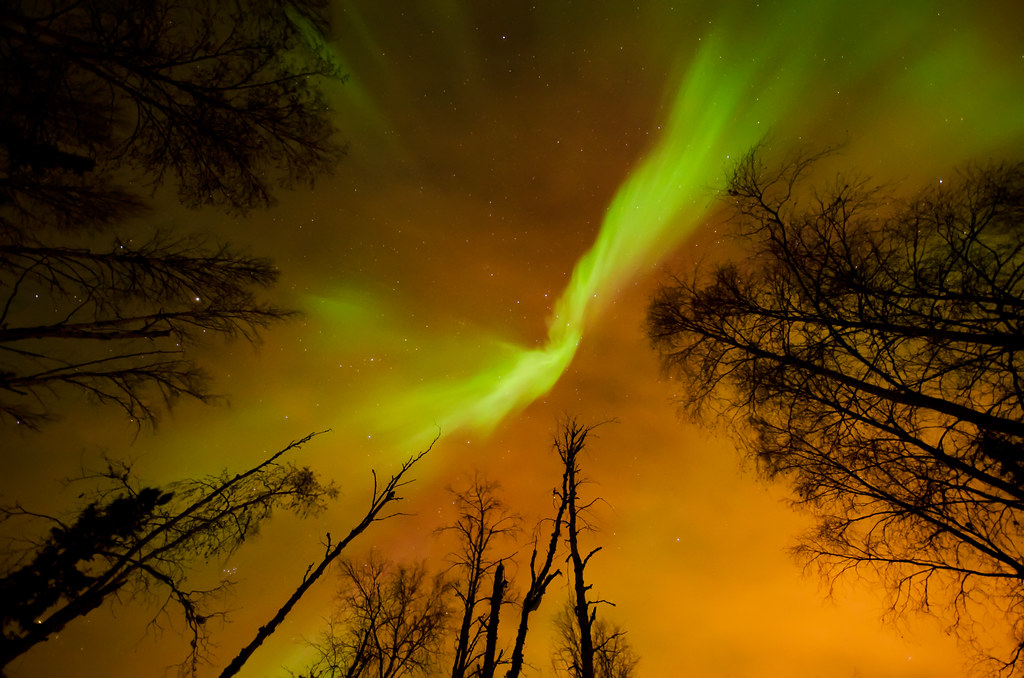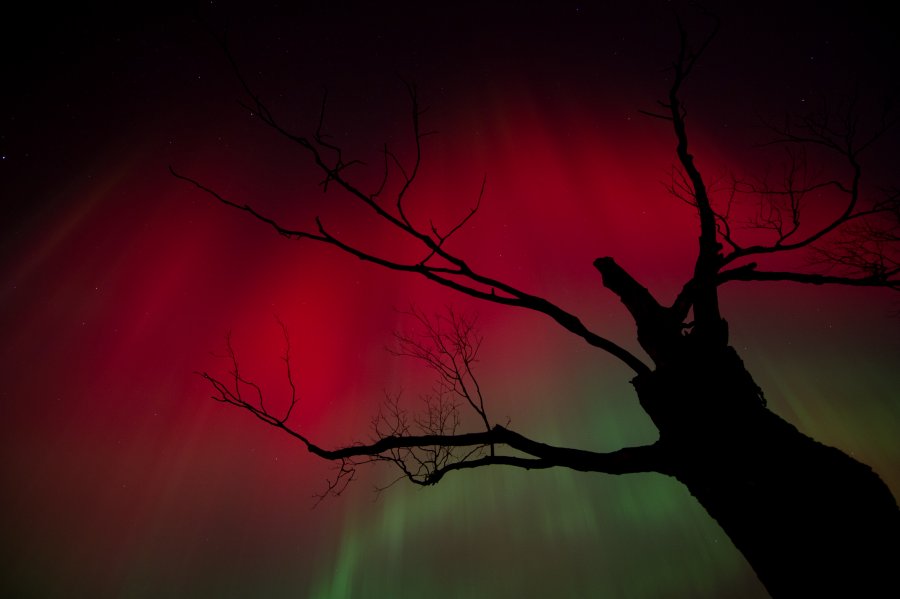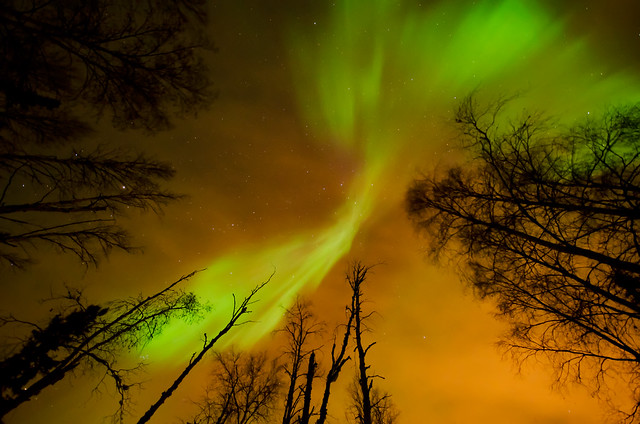
I took this on Monday, when a coronal mass ejection (CME) collided with the Earth's magnetic field. This, in itself, is not out of the ordinary. What is abnormal is for the effects to be seen so far down south. The resulting geomagnetic storm had auroras visible from Arkansas - I had a friend in my hometown call and ask 'Why's the sky red like that?' I, of course, had no clue what he was talking about, and suggested dust or thin clouds lit up by the sunset. :P
From Ontario, it looked like this:
Ozark, AR had yet another view:
It was big news, since this was a brand new experience for most people down there - I must admit, I flipped shit myself when I saw my first aurora last September, and it can still stop me in my tracks, even after seeing countless more.
But those of you who saw it, or even just saw pictures, may be wondering: why didn't it look like the auroras you see in the pictures I take? Well, for one, you're looking at it out on the horizon. Being lucky enough to live under the auroral oval means they're much higher in the sky for me, and consequently much closer. There are advantages to having your aurora overhead*. One is that it's easier to tell the structure - imagine trying to figure out the folds in a curtain from the side compared to looking up from the bottom. Another advantage is that your line-of-sight through the aurora is longer (optical path length) and so the aurora appears brighter.
[*Actually, what matters in both of these cases is not necessarily having the aurora 'up' so much as having it near the magnetic zenith; but for those of us living in the far north, that roughly corresponds to overhead.]
Perhaps more importantly, strong magnetic storms (required to bring aurorae that far south) tend to have auroras dominated by high-altitude reds, which are in a thinner part of the atmosphere - consequently, the aurora produced looks thinner. More normal levels of magnetic activity tends to produce auroras dominated by a lower-altitude green. These occur in a much lower and denser part of the atmosphere, which makes them look more substantial and structured. For example, this timelapse I filmed a few weeks ago:
Compare to this timelapse shot from Ozark, AR on the 24th:
Which is a roundabout way to saying: All aurora sightings are not equal, there are a variety of colors, shapes, and motions for us to explore.



Your photographs are amazing. Especially the first one.
ReplyDeleteI live in Cleveland, Ohio and didn't hear about our ability to see the auroras that night until it was too late. A huge, huge disappointment for me. One of my goals in life is to visit Alaska and see the auroras.
Thank you :) Sometimes it feels like I'm talking to myself here. The auroras are amazing, I wish everyone had the chance to see them.
ReplyDelete